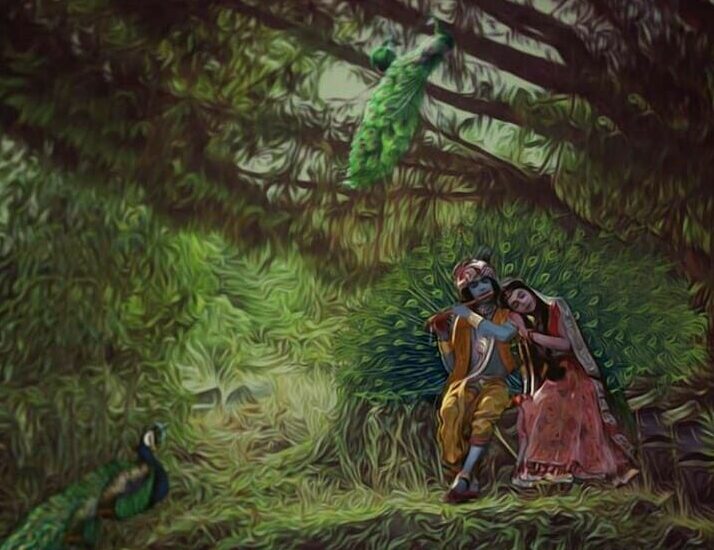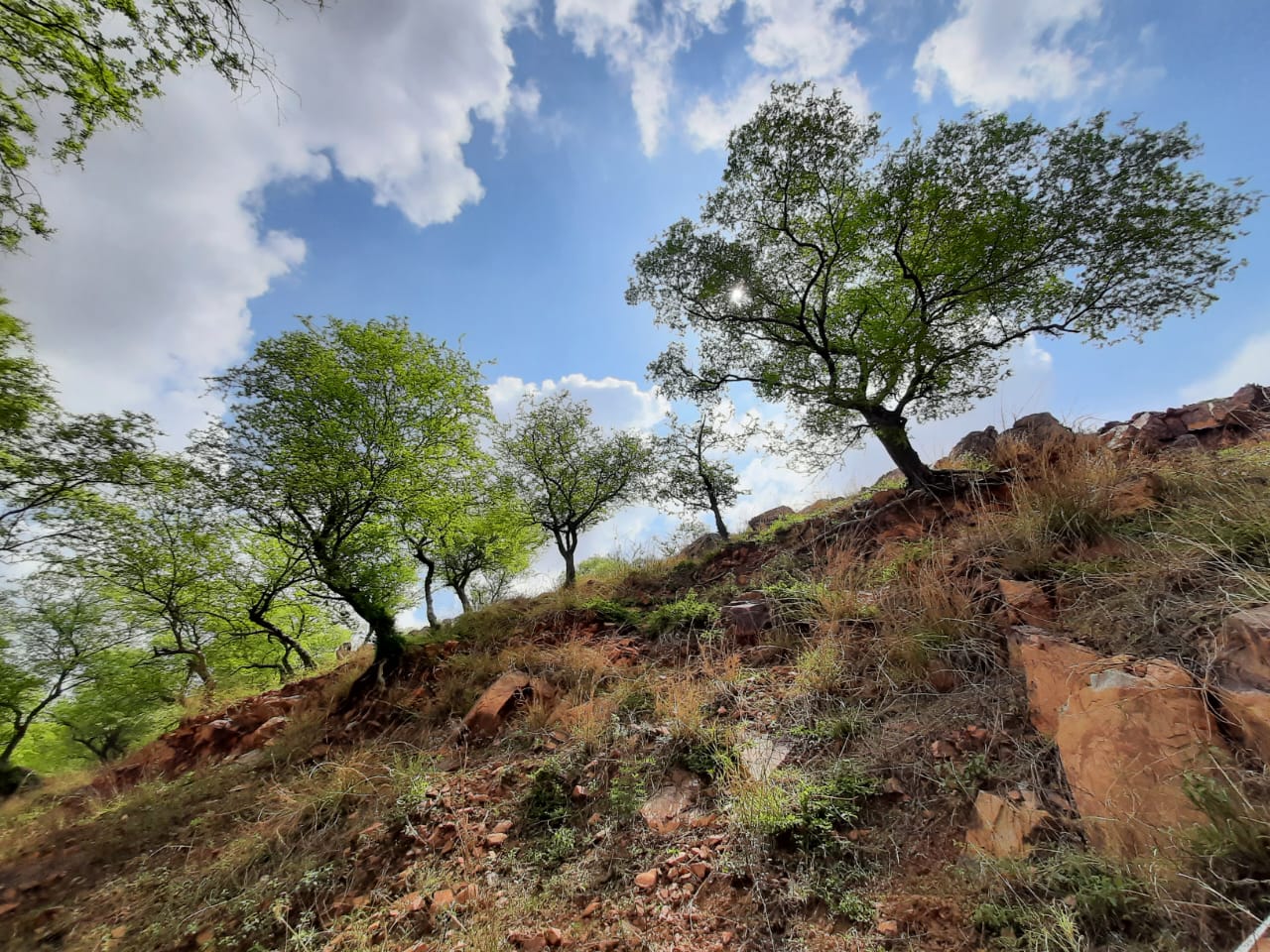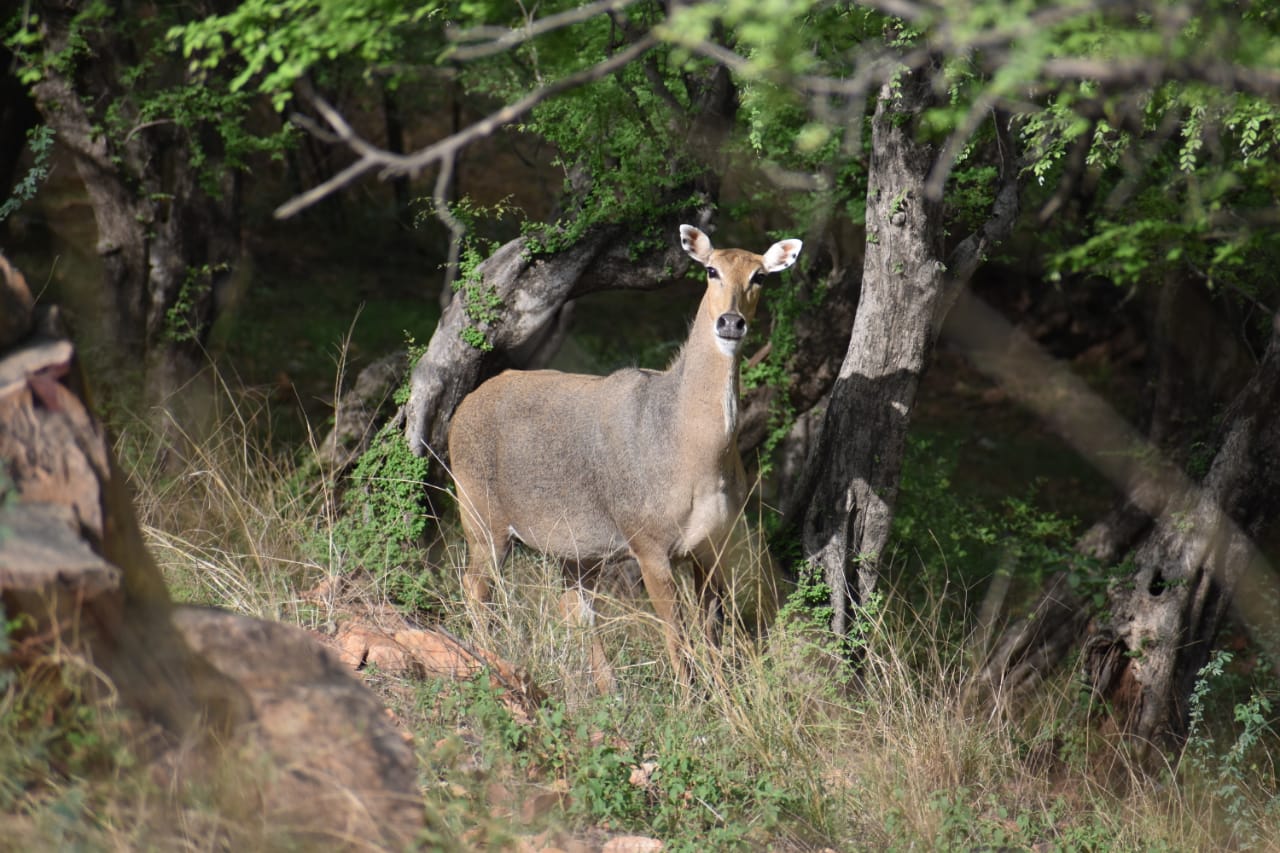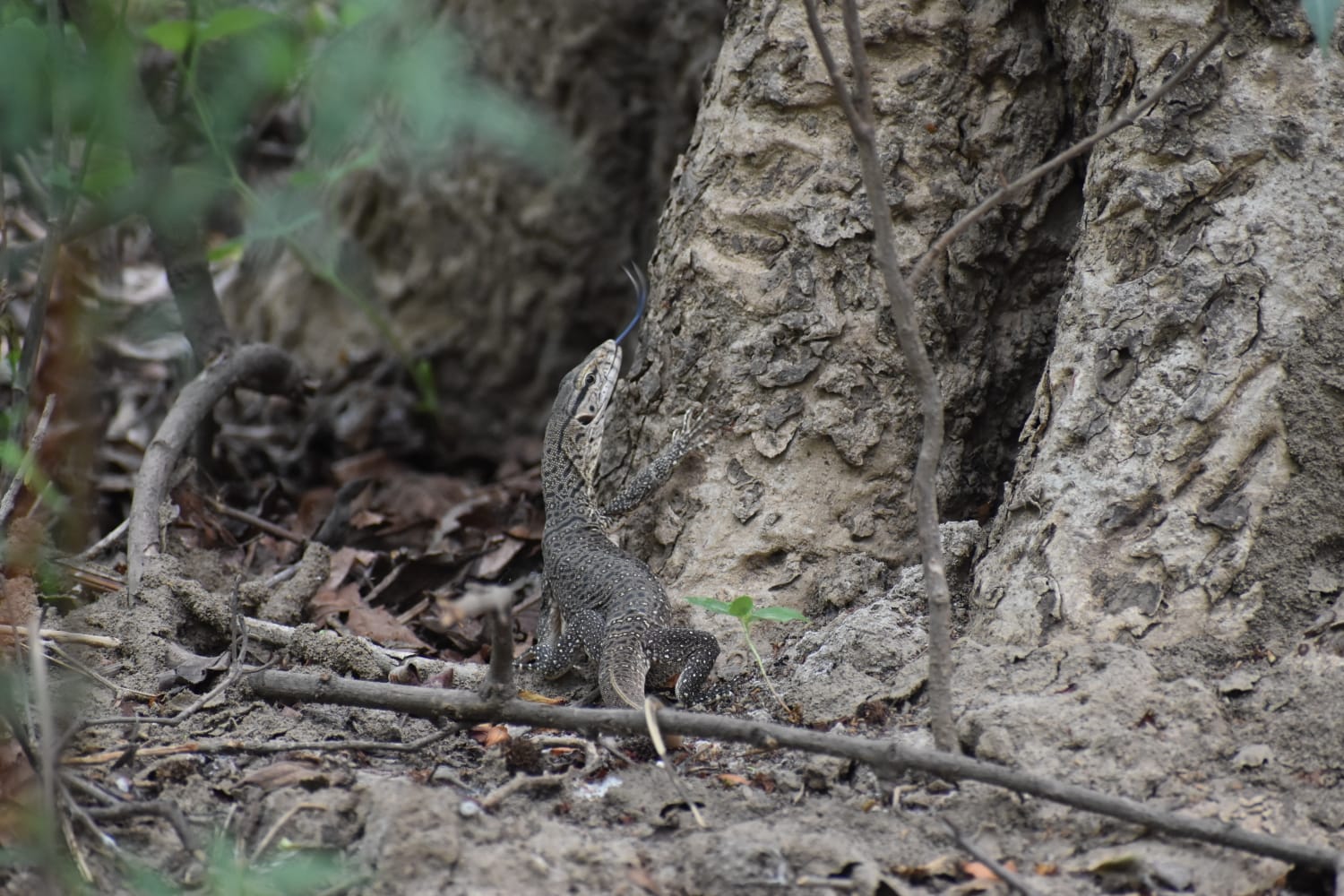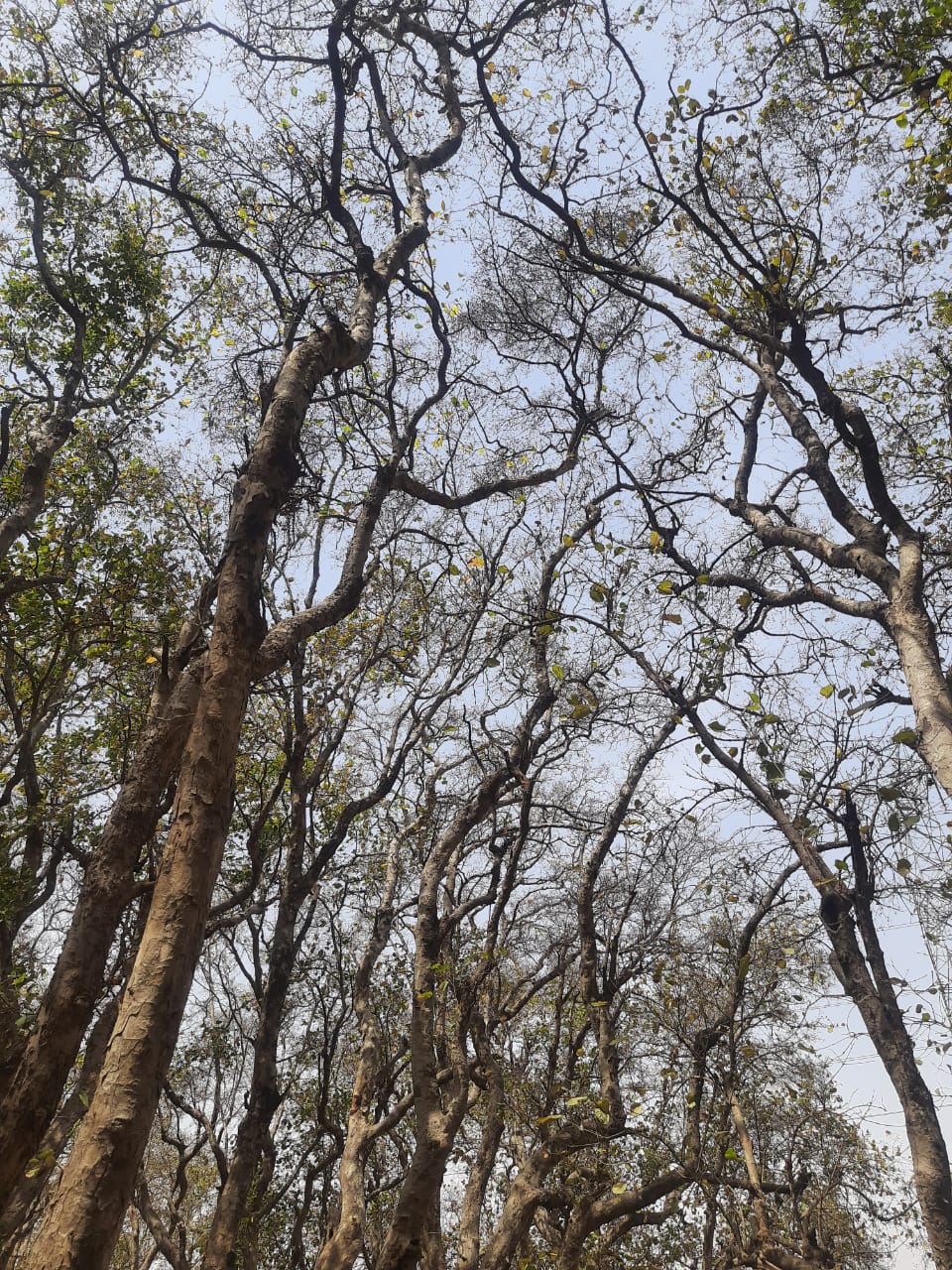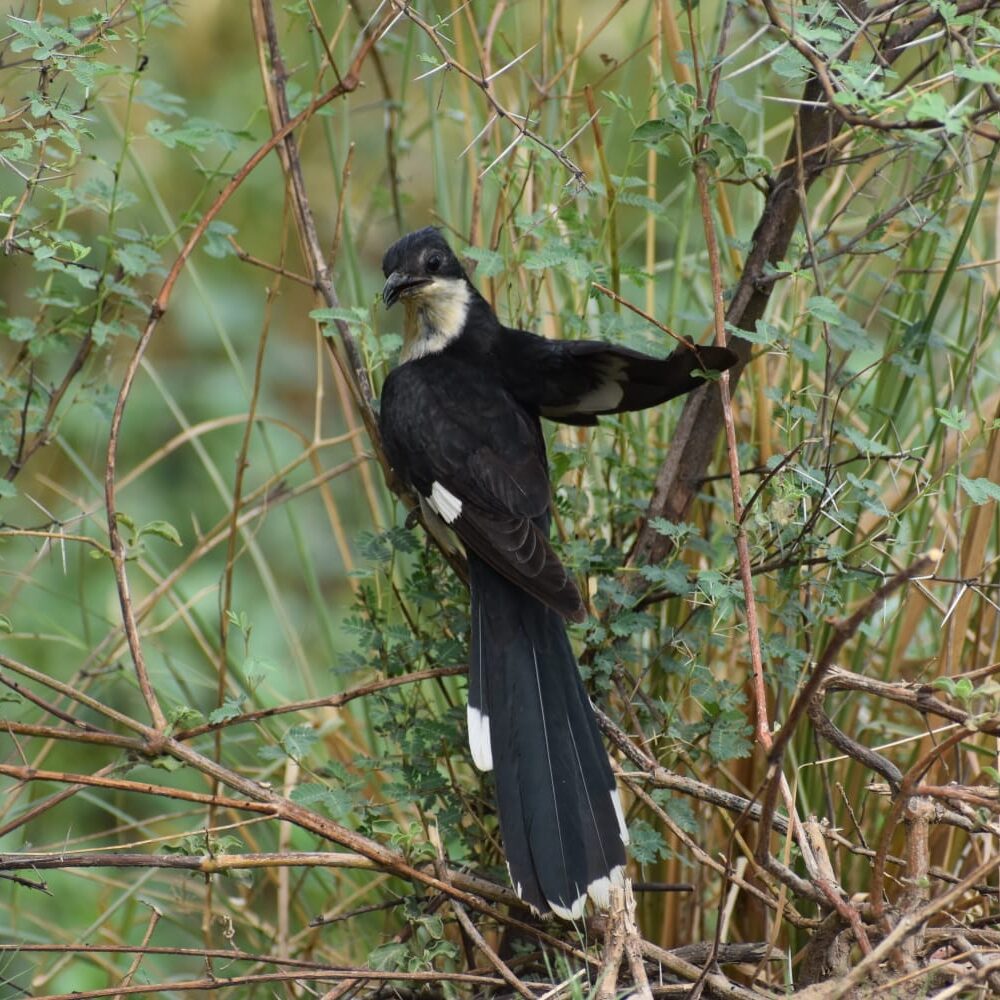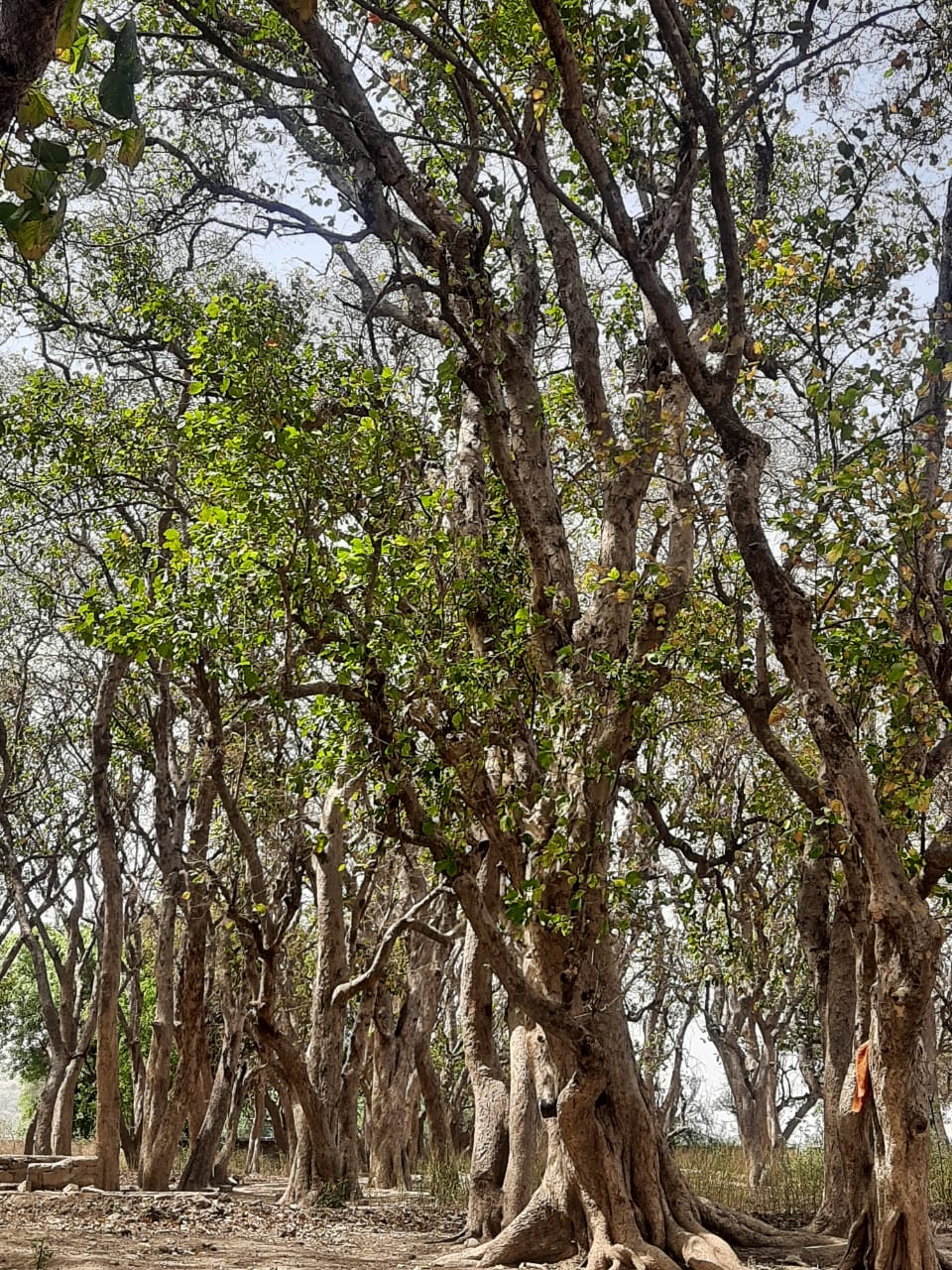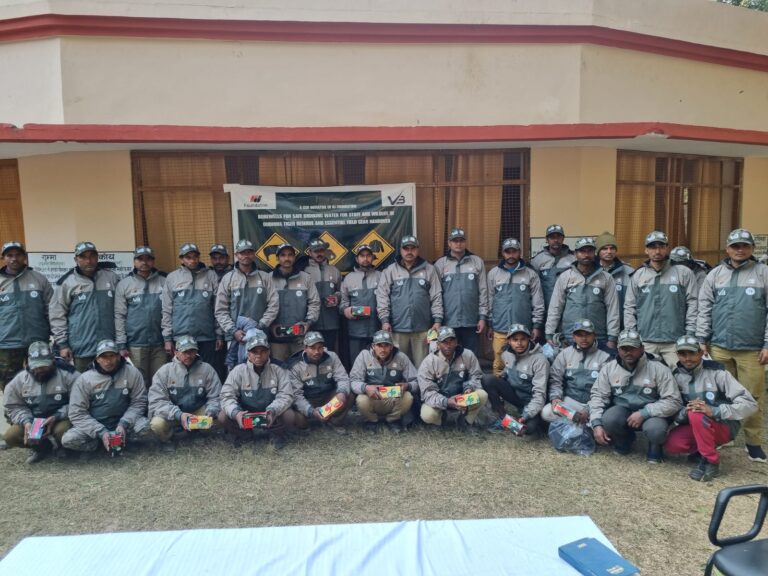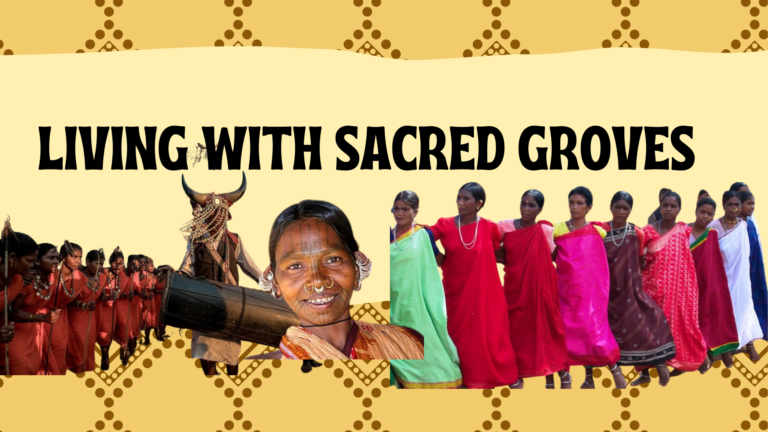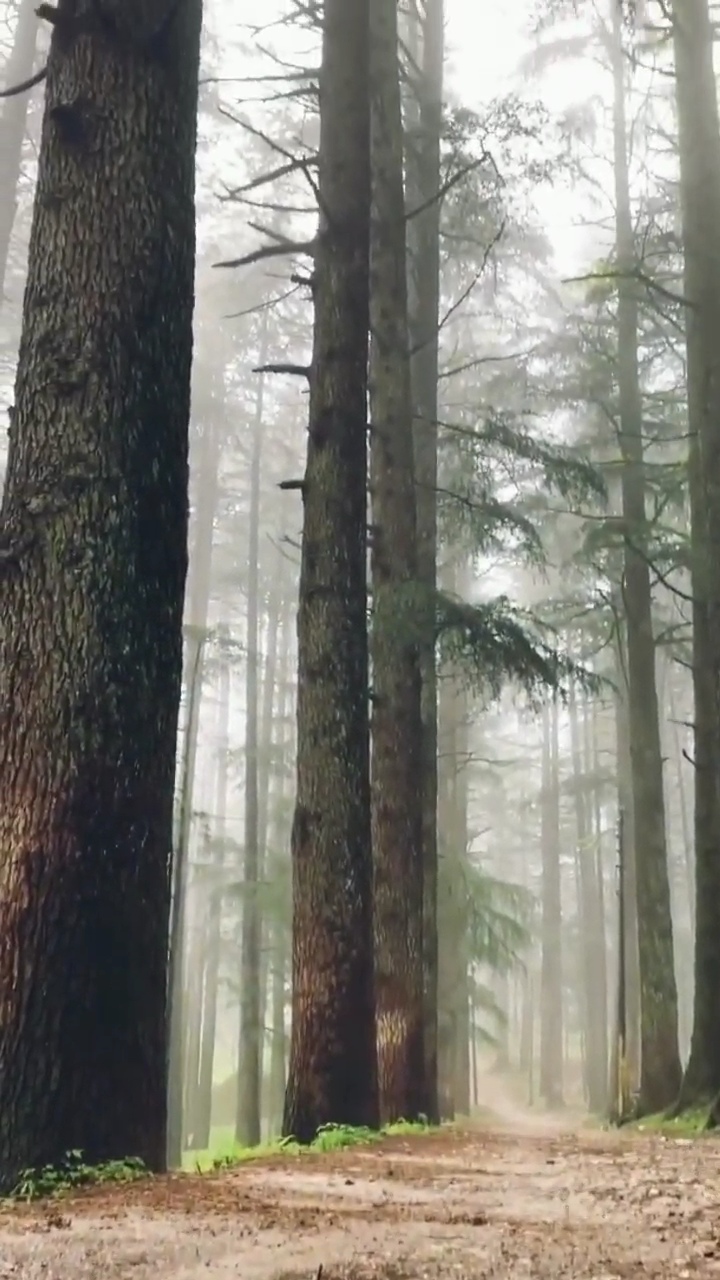A glimpse into the Sacred forests of Maanpur, Uttar Pradesh and Sunehra, Rajasthan, India
By Radhika Bhagat and Rubina Rajan
In the heart of Braj, the forests where Lord Krishna and Goddess Radha performed many “leelas’ ‘, lie several small and large sacred groves. The trees here are said to be divine themselves and are revered as great souls, devotees of Krishna and Radha. It is tragic that the great forests, such holy places have now all but disappeared. No longer do the hillsides echo with the cries of the peacocks perched in the branches, no longer can one sit beneath the cool shade of the Kadamb trees and watch the parrots and forest animals dart from tree to tree. But there is still hope for revival.
The sacred landscape of the Indian subcontinent consists of a network of pilgrimage sites wherein intimate encounters with nature have occurred for millions of devotees. These interactions with nature combined with the spiritual element is an embodiment of nature devotion which in turn forms the foundation for developing a faith-based system of environmental ethos. Today, environmental pollution, unplanned urbanization, and the depletion of natural resources are major problems globally, especially at renowned sacred natural sites.
The sacred landscape of Braj in Northern India provides a suitable and appropriate case study of nature veneration prevalent in a rich body of myths associated with specific locations.. The rituals and related visual myths linked with the geography are part of a traditional belief system tied to environmental values and suggest sound strategies for landscape reclamation as reported by Amita Sinha in her paper “The Sacred Landscape of Braj ”. Although the region shares many similarities with sites across India, Braj is one of a kind with its religious-cultural ethos centered on pastoralism and has a large number of sacred sites along the Yamuna River and Aravalli Hills. Nature and culture which were once deeply interlinked with each other and harmoniously existed have been deeply impacted by reckless development and increasing anthropogenic pressure from nature and culture once coexisted. This degradation is resulting in disconnect with culture and the location specific memories that are so integral to the people of Braj and devotees everywhere.
Sacred Earth Trust in partnership with the Vanamali Project has been working on the conservation of sacred groves in the Braj region. We have conducted biodiversity assessments, phytosociological studies and community perception surveys at the Maanpur Kadamb Khandi in Uttar Pradesh and the Sunehra Kadamb Khandi in Rajasthan. The projects revealed rich folklore associated with these groves seeped in the Braj culture. The Gahvar Van is described in the text- Braj Bhakti Vilas written by Narayan Bhatt ji. It is among the 48 forests/vans of Braj. It is believed that Gahvar Van has special importance among these forests. Radha Rani is said to have created the Gahvar Van with her own hands. The world renowned Braj ki Holi is played here and other parts of Gahvar van. Also some special leelas such as Matki Leela and Sanjhi Leela are also performed here. During Radha Ashtami and Holi the Gahvar van is visited by a large number of people. Gahvar van and Kadamb khandi are also part of the yearly Braj Parikrama.
The studies form baseline information regarding the biodiversity and culture of these groves which had never been documented before. The projects allowed us to understand how deeply the people connected with these sites and how their belief was the only thing standing between the groves and their complete destruction. The aim of the research is to aid in the legal protection of these groves as Community Reserves.
Sunehra Kadamb Khandi is located in the Bharatpur district of Rajasthan and spans nearly 200 acres. The grove is held sacred as it is the place where revered saint Naga Baba went into samadhi after Lord Krishna and Radha came together to untangle his braids from the bushes of Heens (Capparis sepiaria). The area falls under semi-arid biogeographic zone and has Dry Tropical Thorn Forest.As part of the project tree density, basal area, biomass and carbon stock estimation was conducted along with biodiversity assessment and community perception survey to get an understanding of the grove. Researcher Ashutosh Bajpai conducted the phytosociological survey, recording a total of 856 individuals belonging to 7 orders, 9 families, 10 genera and 12 species. The sacred grove was found to be heavily infested with Prosopis juliflora (IVI-78.00)- an Invasive Alien Species (IAS) which was found to be competing with native species. As part of the biodiversity assessment conducted by researcher Ishani Dutta 5 species of mammals, 51 species of birds, 3 species of reptiles and 6 species of butterflies were recorded in the grove during the course of the study. The community survey suggests that the villagers are worried regarding invasive species and the declining biodiversity of the grove. The findings of the study can form a baseline for more intensive studies and also strengthen the appeal for the grove’s legal protection.
Maanpur Kadamb Khandi in Barsana is part of the Gahvar Van. This forest was historically a large forested patch located in Barsana and still exists to date though in very fragmented patches. The forest is said to be as old as 5000 years. It is significant from a religious perspective as it is the site of numerous Leelas performed by Hindu deities Radha and Krishna. The Leelas are said to be performed in forests, hills, ponds and by river sides in Braj. The community survey revealed that the majority of respondents believed that the grove was established by Goddess Radha and it has reduced in size over the years. The efforts of saints like Ramesh Baba ji have been instrumental in protecting the grove from disappearing. Taboos exist against cutting trees and encroachment. The Kadamb Khandi is an important feature of the Braj landscape and has a spiritual significance for the people. The community also stated that they wanted to safeguard the grove as it was their duty. Encroachment is a major threat to the grove which has been temporarily halted by the construction of a boundary wall. However legal protection along with awareness are vital to protect this grove from disappearing.
The aim is to use the findings of the studies to strengthen the claim for the legal protection of sacred groves across India. These groves are vital living green spaces which are an amalgam of rich culture and refuge for its various inhabitants that need to be conserved before the last grove disappears.

